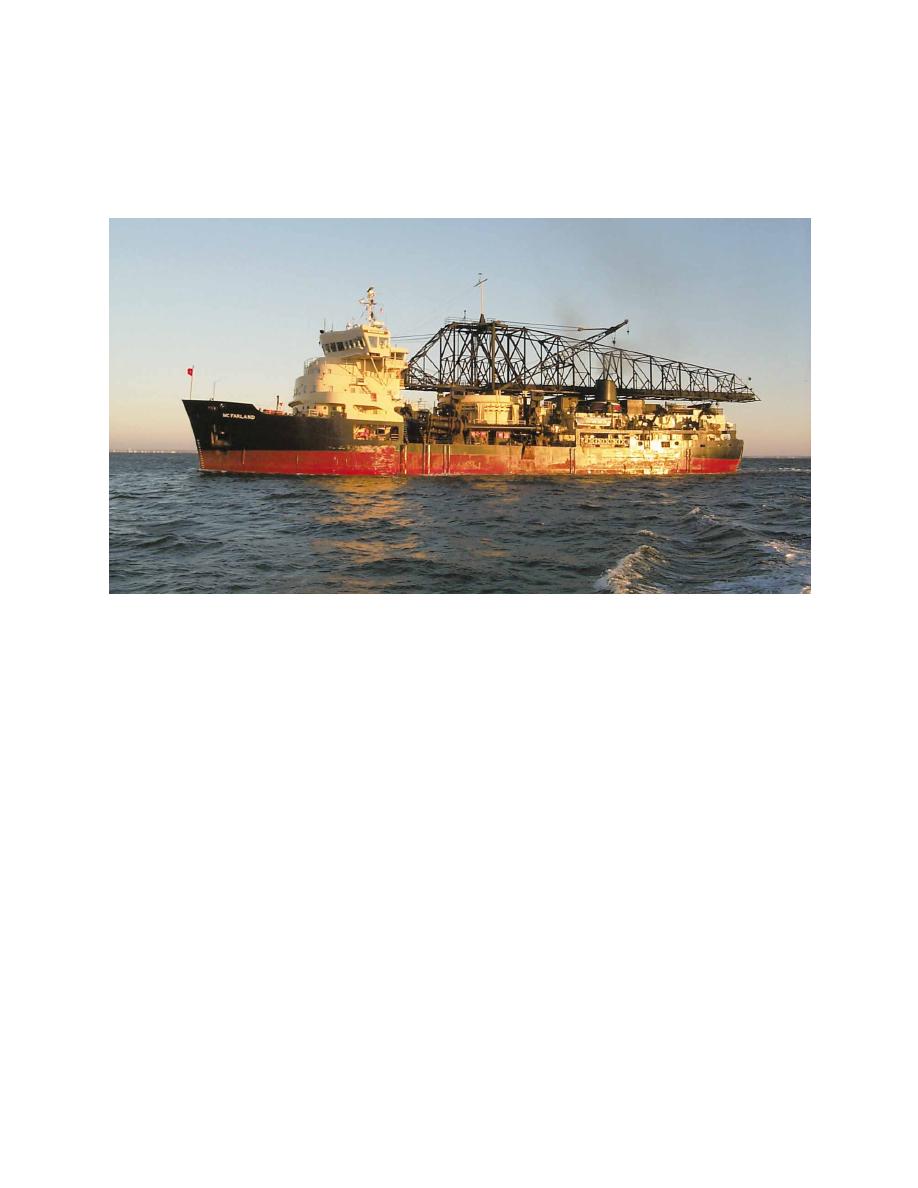 |
||
|
|
||
|
Page Title:
Figure 3. Corps dredge McFarland |
||
| |||||||||||||||
|
|
 ERDC TN-DOER-I2
July 2000
Dredge McFarland. The dredge McFarland (Figure 3) is a Corps dredge built in 1967 with a
rated capacity of 2,400 m3 (3,140 yd3) that is operated by the U.S. Army Engineer District,
Philadelphia. Instrumentation was installed 28 August 1999 on the McFarland to monitor and
collect hopper volume and vessel displacement data necessary to calculate TDS values.
Figure 3. Corps dredge McFarland
Dredge Columbus. The Columbus (Figure 4), owned and operated by B+B Dredging Company,
is a hopper dredge with a rated capacity of 3,361m3 (4,397 yd3). Since January 1998, this dredge
has worked for the Mobile District under rental contracts that specified not only ullage, draft, and
position measurement, but also the full suite of data parameters required for the SI hopper dredge
monitoring system. In addition to collecting TDS data, the SI (Rosati 1998) also incorporates
contract assurance requirements and is an analysis and reporting system to assist in the inspection
of contract dredging operations.
SENSORS
Hopper Level Sensors. Ultrasonic sensors were selected as the first type of measurement
technology to be investigated on the McFarland. Two ultrasonic ullage sensors (LUNDAHL
DCU-1104s) were installed over the hopper to measure the level of dredged material. The forward
e
sensor is pictured in Figure 5. Ullage (pronounced ` l-ij), as defined in Webster's (1983) dictionary,
is the amount that a container such as a cask or tank lacks being full. This ultrasonic sensor measures
the distance between sensor and dredged material by using a piezoelectric transducer to send out
cone-shaped sound waves in a series of pulses. These pulses reflect off the top of the hopper
material (slurry or water) and echo back to the transducer. The distance between the dredged
material surface and the transducer is calculated by the sensor from the time interval between the
pulse transmission and echo reception.
6
|
|
Privacy Statement - Press Release - Copyright Information. - Contact Us - Support Integrated Publishing |